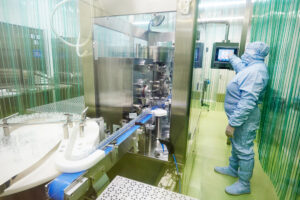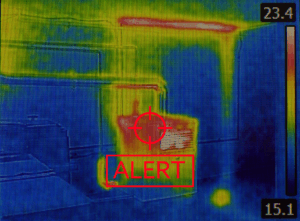Have you ever wondered what would happen if we stopped recycling? Aside from the overtaxed landfills, we’d face more accelerated climate change, increased pollution, huge damage to wildlife, and more. The effects of non-recycling might take years to be fully visible but none of us want to live in such a world.
This is why recycling facilities play such an important role in our well-being. Mostly unseen, they make sure we can lead a healthy life. Yet, very few people think about the pressure recycling facility managers face.
With the growing emphasis on environmental conservation, these facilities face increasing pressure to operate efficiently, while at the same time keep costs under control.
Opticom empowers recycling facilities to do just that — improve their processes and keep their costs under control. Here’s how our customers use video monitoring for process optimization in recycling facilities.
How Video Monitoring Improves Processes in Recycling Facilities
Typically, video monitoring is seen as a way to enhance security. While that is an undeniable benefit, video monitoring systems can do so much more for industrial environments like recycling facilities.
Enhance Operational Visibility With Video Monitoring
You cannot improve what you don’t know about, right? Video monitoring provides unparalleled visibility into the daily operations of recycling facilities.
Strategically placed cameras offer real-time insights into various stages of the recycling process, from waste intake and sorting to processing and storage. This visibility allows supervisors to identify bottlenecks, monitor equipment performance, and ensure that workflows are running smoothly.
Identify Inefficiencies in Recycling Plant Processes
Recycling facilities deal with high volumes of waste material, which makes it challenging to maintain a seamless flow of operations.
Video monitoring helps pinpoint areas where materials may be accumulating or processes are being slowed down. By analyzing video footage, you can identify specific points where inefficiencies occur and take corrective actions to streamline operations.
For instance, could a certain process work faster if the storage unit is closer to the conveyor belt? Do you need two operators for a workstation or would one suffice?
These things are hard to see when you are on the ground, yet very easy to spot if you have the bird’s-eye-view that video monitoring offers.
Quality Control Made Easier
Video monitoring systems enable real-time inspection of materials as they move through the sorting and processing stages. This is a crucial element for the profitability of a recycling plant.
By closely monitoring the quality of sorted materials, your facility can reduce contamination rates and ensure that only properly sorted materials proceed to the next stage. Thus, it becomes much easier to meet industry standards and customer expectations.
Improving Worker Safety With Video Cameras
Recycling facilities can be hazardous environments due to heavy machinery, moving vehicles, and the presence of potentially dangerous materials. Video monitoring enhances worker safety by providing a constant watch over high-risk areas.
A remote operator watching the facility in real-time can detect unsafe practices, such as improper use of equipment or failure to follow safety protocols, allowing supervisors to intervene promptly.
Better yet, you can use the video footage for training purposes to educate workers on best safety practices. You will have examples of both safe and unsafe practices to help make your case.
Meet Regulatory Standards and Use Video Feeds to Prove Compliance
Recycling facilities are subject to numerous regulations aimed at ensuring environmental protection and worker safety. Even the tiniest misstep can result in hefty fines or even the shuttering of your facility.
Through video monitoring, you can document your operational practices and provide evidence of your adherence to regulatory requirements. Opticom customers across multiple industries report using video footage to demonstrate compliance and avoid unwanted business disruption and fines.
Reduce Downtime Through Video Monitoring
Downtime in recycling facilities can lead to significant operational losses. Video monitoring helps minimize downtime by enabling proactive maintenance and swift response to issues.
By monitoring equipment performance and identifying potential problems early, you can schedule maintenance activities during planned downtimes and avoid unexpected disruptions to operations.
What Cameras Are a Good Fit for My Recycling Facility?
If you wouldn’t use cooking equipment in your recycling facility, then you shouldn’t use cameras that are built for commercial and residential uses either.
Recycling facilities are challenging environments for electronic equipment. Dust, moisture, extreme temperatures, and vibrations are common factors that can damage standard cameras.
Rugged cameras like Opticom’s are specifically designed to withstand these harsh conditions, ensuring reliable performance and longevity.
While off-the-shelf cameras may require a lower initial investment, you will need to replace them often, which adds to your total cost of ownership. In the long run, industrial cameras have a lower cost of ownership and better ROI.
Need help choosing the right cameras for your recycling facility? Opticom has been helping industrial plants choose the ideal video monitoring system for more than five decades. Reach out to our experts for a free consultation.







